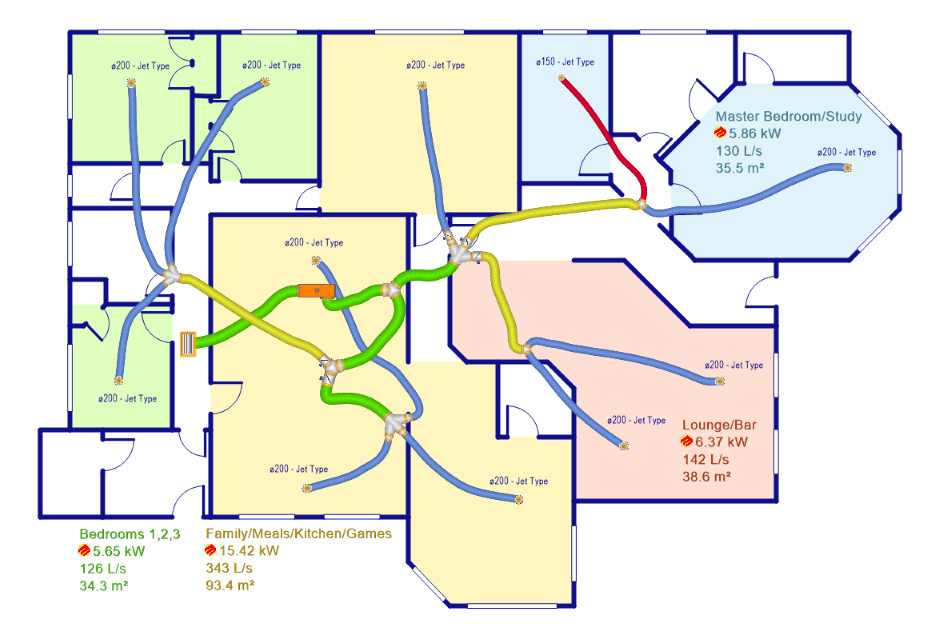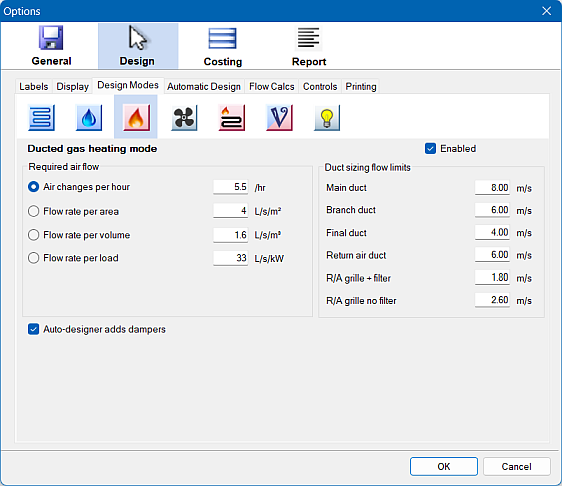The Ducted Gas Heating Design Mode
- Home
- Help Documentation
- Design Modes
- The Ducted Gas Heating Design Mode

Ducted Gas Heating Systems
Ducted gas heating systems provide an efficient form of domestic heating. A gas burner can provide warmed air through either an under-floor or in-ceiling duct system. The same duct system can often be designed to be used for both gas heating and either evaporative or refrigerative cooling.

Designing a Ducted Gas Heating System
You can select the ducted gas heating design mode ( ) with the Design -> Loads -> Design mode drop-down button.
) with the Design -> Loads -> Design mode drop-down button.
You should ensure that you have loaded suitable catalogs that include ducting, outlets, and gas ducted heating units when you do a design in the gas ducted heating design mode.
You can adjust the program settings to use for heating under the Options -> Design -> Design Modes -> Ducted gas heating mode:

When laying out your load zone design for a heating system, the heat loads specified are implicitly the amount of heat to supply rather than the amount of heat to remove.
When designing a heating system, floor outlets are normally placed under windows if possible, so that the rising warm air counteracts any falling cold air near the window. The air then flows back across the room towards the centre of the building where the return air intake is typically located in a common area such as a passageway.
You can use the Automatic design toolbar tool ( ) to automatically generate a design in this mode. However, the designer does not know where windows and walls are in your floor plan, so you will need to modify your design appropriately by hand to get an optimal placement of your outlets.
) to automatically generate a design in this mode. However, the designer does not know where windows and walls are in your floor plan, so you will need to modify your design appropriately by hand to get an optimal placement of your outlets.
If you are designing a combined gas ducted heating and cooling system, it is often convenient to use the plan level tabs context menu item Copy to copy your entire design onto a new tab.

In that way you can do two designs, in different design modes but with the same duct layout, to ensure the ducting design is suitable for both.